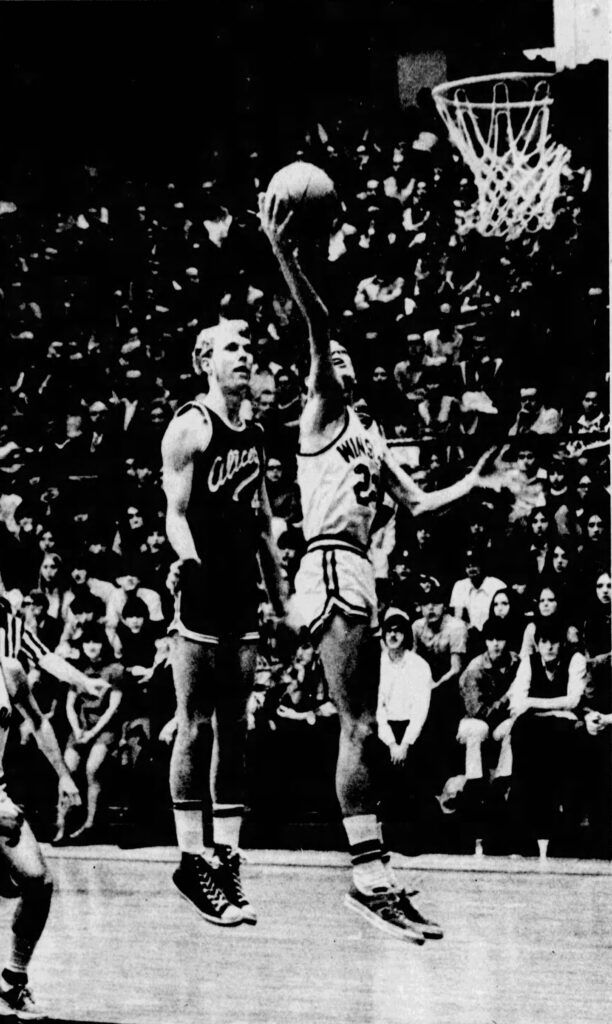The fall of 1972 to the spring of 1973–my senior year at Oakland City College. Larry Bird was an unheard of junior at Springs Valley High School, playing on a senior dominated team, waiting to explode on the basketball scene the next year. Mark Bird, his brother, was a college sophomore and played on the Oakland City College basketball team, where I watched him loft long arching jump shots. Meanwhile, during the Indiana high school basketball season of 1972-1973, I was still learning about the intriguing traditions of the local Indiana high school teams. That year, I was about to learn about one team and one player in particular.
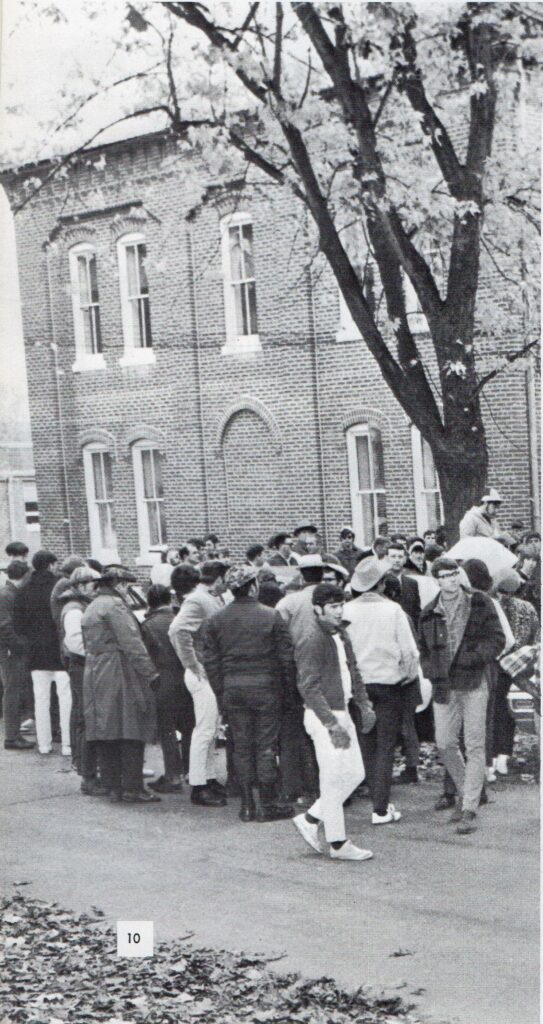
Seeing former high school students wearing their high school class jackets on the OCC campus had initially piqued my interest in Indiana high school basketball, leaving me to wonder whether they were any better than the southern Illinois players I went up against. Like Bluford High School where I had played, the local Oakland City high school, Wood Memorial, were the Trojans, with a Trojan mascot on the class jackets. The nearby Princeton team were the Tigers, the word Tiger in fancy scroll. But the most unusual school jacket I would occasional spy on campus was the one for small-town Winslow High School. Their mascot, prominently displayed on their jackets, was an Eskimo, and their team, were the Eskimos. They all seemed to know the story too, the odd mascot selection originating from the cold winter conditions in the school’s first gymnasium. When a new bigger and warmer gym was opened in 1950, the unusual name still stuck. It may have been the most unusual high school mascot in the country.
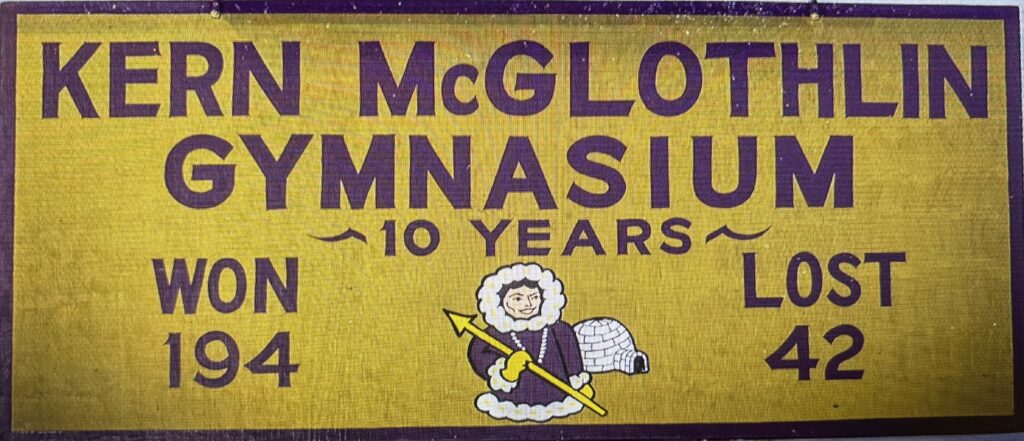
Ever the historian, I discovered the Eskimos achieved legendary status in the 1950s under the direction of Coach Kern McGlothlin, and with the help of players like Dick Farley. A later Indiana University star and NBA player, Farley led Winslow High School to a four year record of 83-8. In Farley’s junior year, the team went undefeated in the regular season but was upset in their first sectional contest by state championship bound Jasper. The next year Farley was the key player in the Eskimos coming up two games short of the state championship. Sadly, Farley died of cancer at a relatively young age.
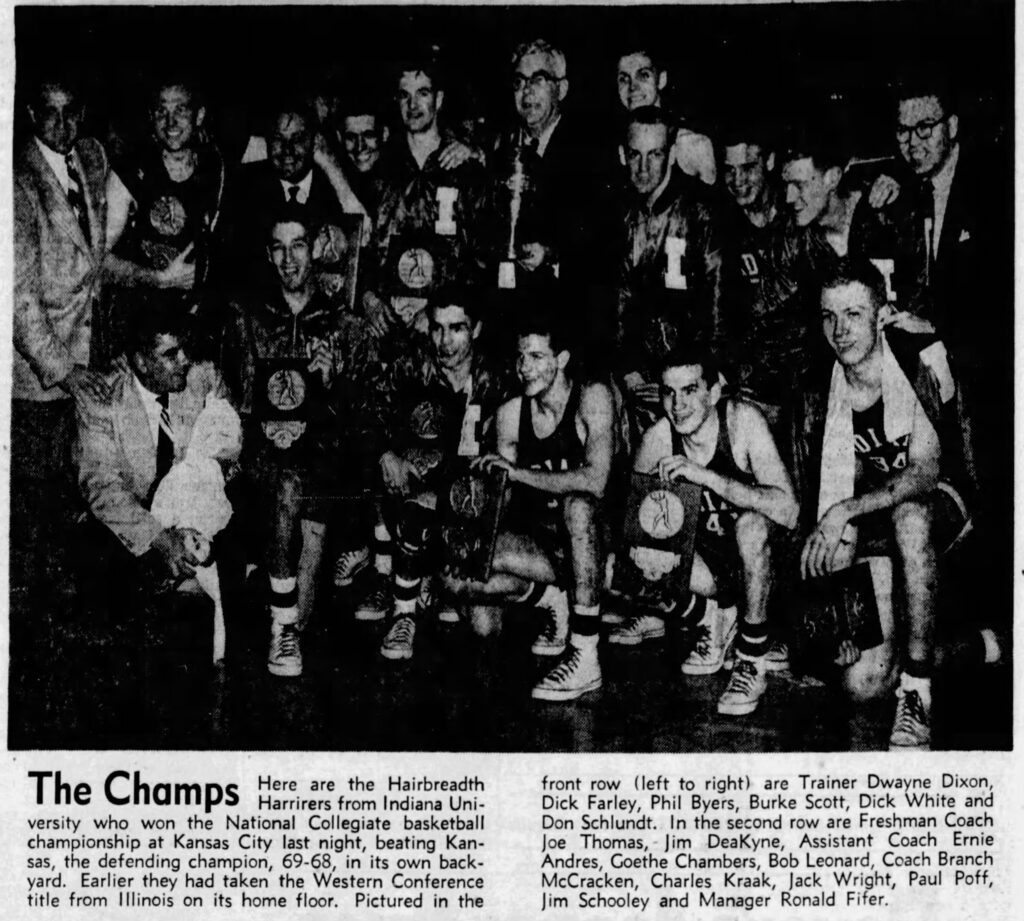
But the celebration of Winslow High School basketball successes had not yet ended. The 1953-1954 team, absent any super stars, made history once again,advancing to the semi-state round. Several of these players moved on to play at Oakland City College. The ’53-’54 crew, however, seemed to be Winslow’s last big hurrah.
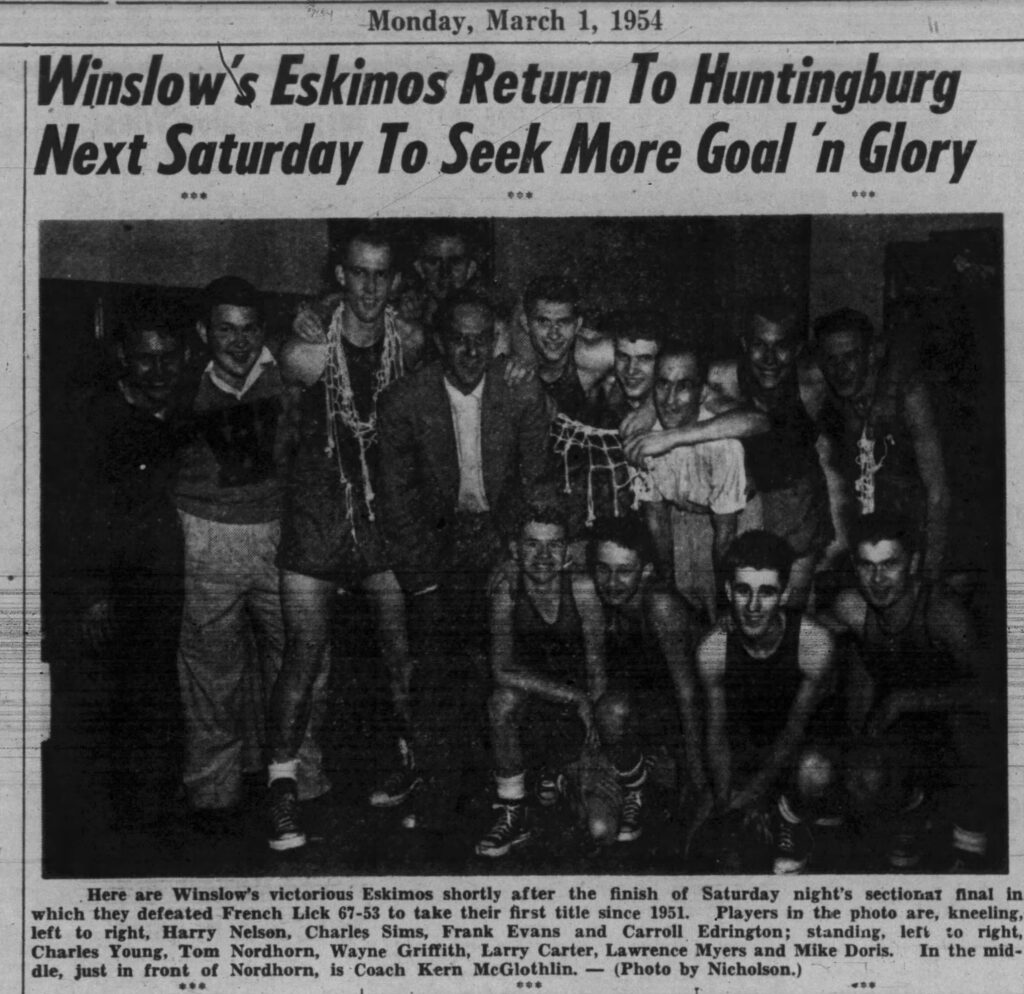
Over the years, a whole host of Winslow players found their way to Oakland City College to play basketball, and their achievements still lingered in the air when I walked the campus of OCC in the early 1970s. Their stories and contributions were made even more interesting by the recent news that Winslow was soon to be sucked up by the consolidation of all the Pike County schools. But, as it turned out, the Eskimos were about to have one more brief round of fame, and I would be around this time to see it.

I began to hear talk about the Winslow team early in the 72-73 season, conversations in the OCC cafeteria, in the Oaks sandwich shop, while walking down the Jordan Hall third floor corridor. Midway through the season they were undefeated, their best player, a 6-6 lad named Gary Elliott who was setting the nets on fire.
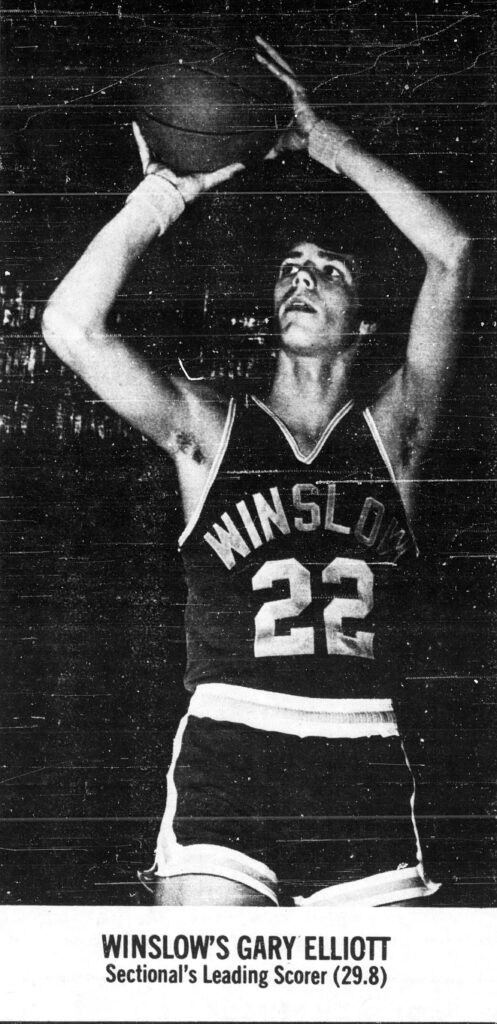
Like players from southern Illinois in my day, players from southern Indiana were often ignored by the their state’s big city presses. But Elliott’s play was hard to disregard. If sportswriter Bob William, who penned the iconic “Shootin’ the Stars” sports column for the Indianapolis Star was correct, Indiana’s best big man when it came to scoring halfway through the 1972-1973 season was not New Castle’s 6-11 giant, Kent Benson. “Much to everyone’s surprise,” Williams wrote, “the leading scorer of all the big men in the Hoosier basketball commonwealth wound up 150 miles from New Castle.”
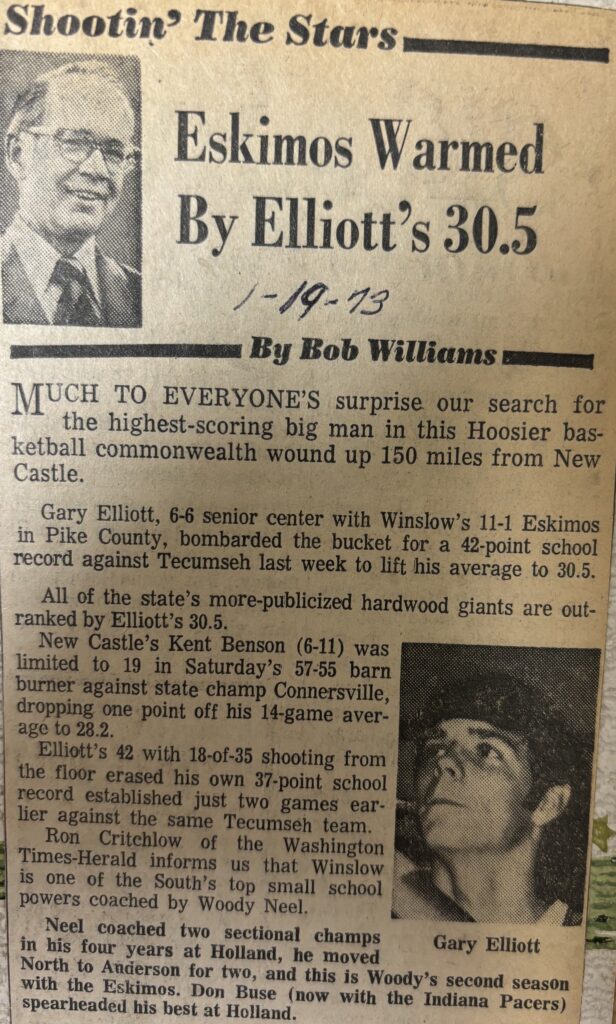
Williams then went on to explain that the leading big man scorer in Indiana came from the small-town Winslow Eskimos, deep down in the coal mining country of Pike County, in southwest Indiana. “All the states more-publicized giants are outranked by Elliott’s 30.5 average,” the sportswriter declared. No one was more excited about Elliott’s play than the Eskimos’ coach. New coach Woody Neel, who had guided nearby tiny Holland High School to an undefeated regular season a few year prior, led by super star Don Buse, believed he had another winner. Many others agreed.
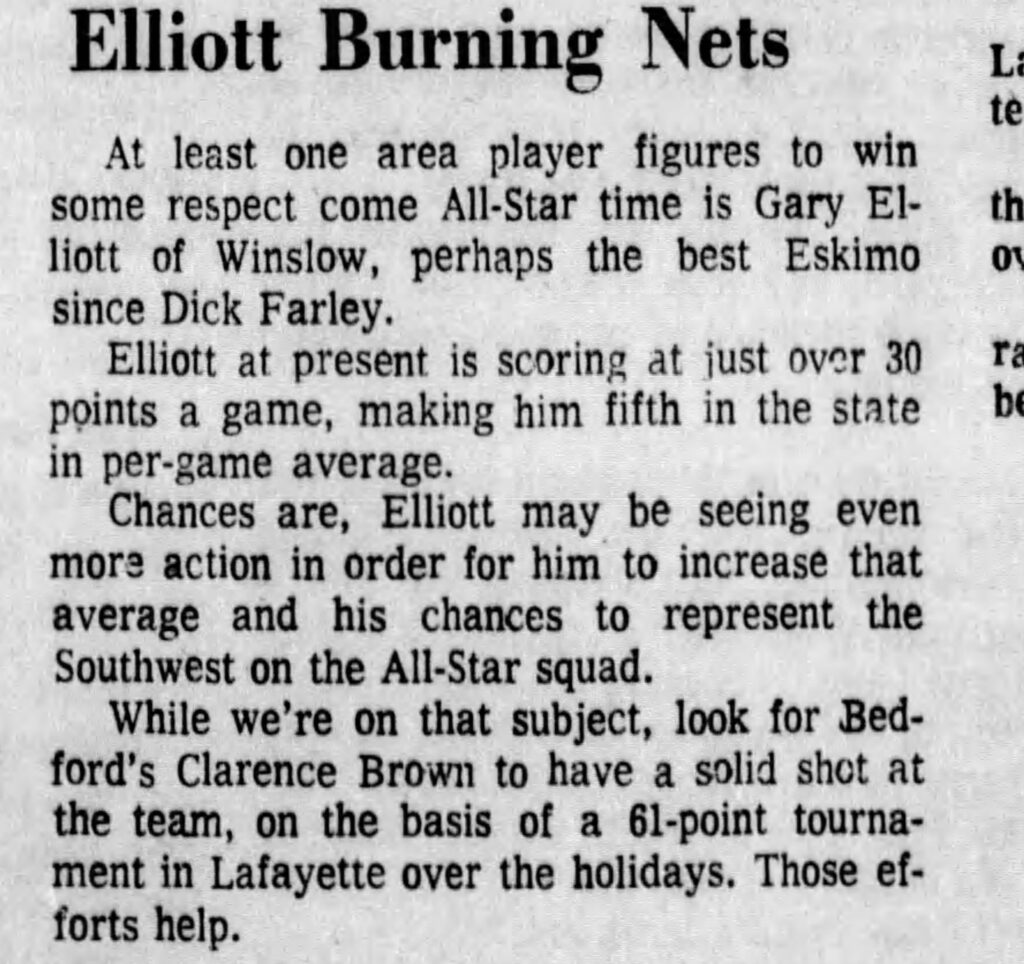
Other reporters began gushing over Gary Elliott’s play. John Updike, an Evansville sports writer declared Elliott “perhaps the best Eskimo since Dick Farley.” Another Evansville sportswriter noted that the lanky Elliott, who could not only shoot, but loved to block shots and could handle the ball like a guard if needed, would be a strong candidate for that year’s Indiana All-State team, an honor that often did not come to players who toiled in the southern part of the state.
Elliott was not alone on the Eskimos squad. When opponents started sagging in on Elliott to stop, or at least slow down, his scoring in his amazing senior year, the Eskimos had a strong set of players who could pick up the scoring slack. They included Larry Barr, Mike Brewster, Doug Burns, Mike Smith, and Steve English. Their play created a wave of excitement in the Winslow community that only grew as the season progressed, excitement that touched even the OCC campus.
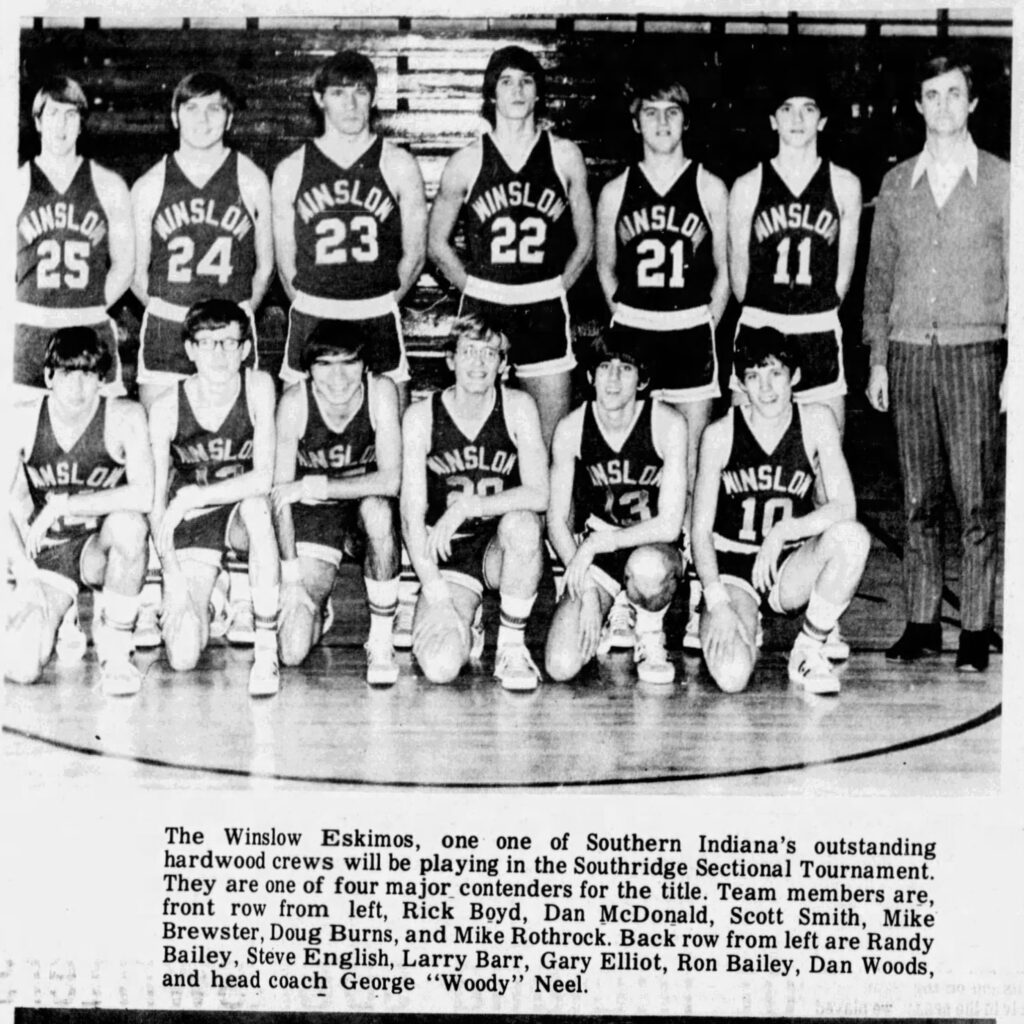
Elliott’s skills were evident early on. Gary had broken into the Winslow starting lineup as a sophomore, standing then at 6-1 in one of the team photos. He was still growing during his junior year and improving his game. He was Winslow’s leading scorer as a junior, and was selected for the all-sectional team at the Vincennes sectional that year.
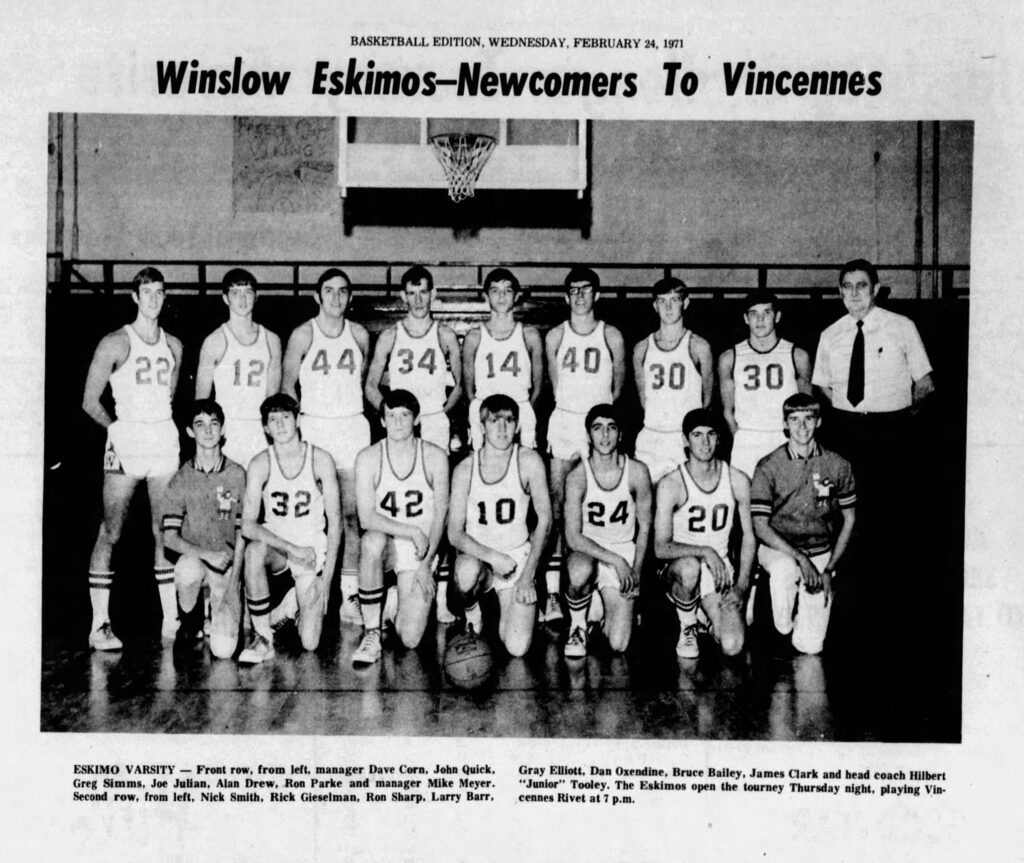
By the time Elliott was a senior, he had grown to 6-6 and could, at times, score at will, setting not only the school’s permanent single game scoring record (42) and all-time career scoring records (1,203), but also the single game rebounding record (32). These feats would never be surpassed since the school would consolidate in 1974-1975 with Petersburg and Otwell to become Pike Central. In the ’72-’73 season, Coach Neel called Gary Elliott “one of the best player in the state. If he was playing for a big school upstate, he’d be all over the papers. He has some qualities you don’t find in players his size— he’s a good ball handler, and he has exceptional quickness.”
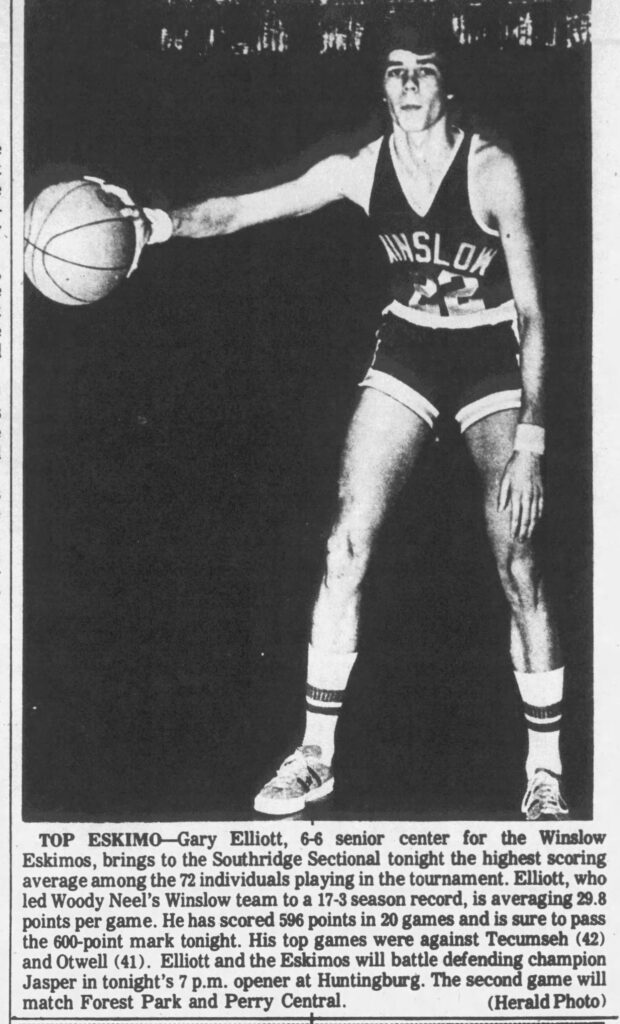
By Christmas of 1972, I was hearing plenty of former Winslow students on the OCC campus talking about the Winslow team and Gary Elliott. Finally, in February, I went to see Winslow play the local high school team, Wood Memorial, at the Oakland City gym. That night I too became a believer. Elliott had scored previous highs of 41 and 42 points. Against the Wood Memorial squad he all but tore down the nets with his accurate shooting, hitting for 35 points and leading the Eskimos to an overtime victory.
I remember his silky moves to the basket and his smooth handling of the basketball for such a big man that amazing evening. It seemed he could do it all.
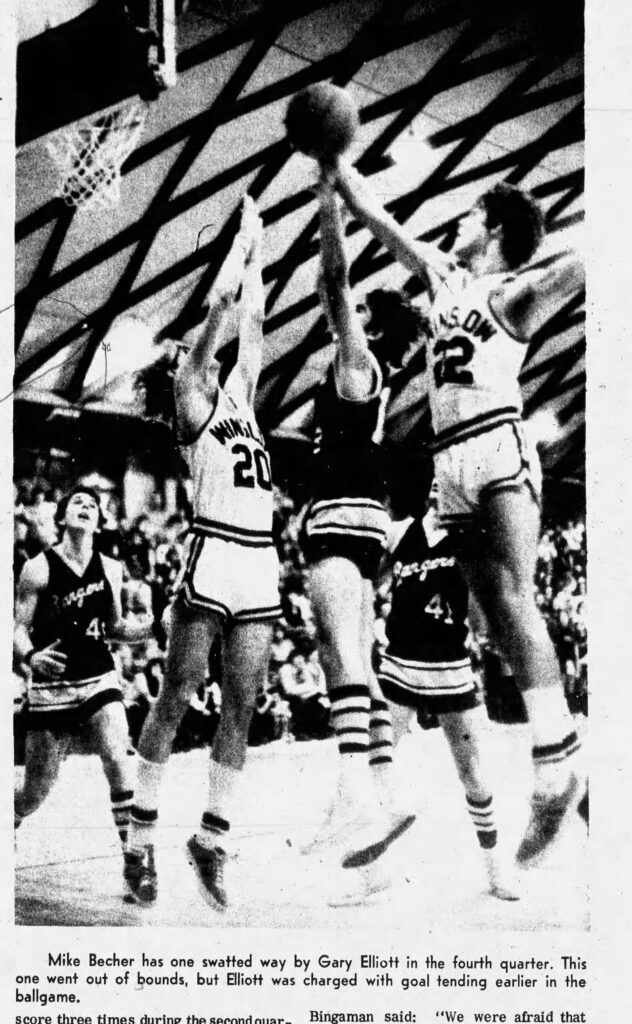
Going into the 1973 Huntingburg sectional, the Winslow crew was 17-3, the best record of any team in the tourney, and I was certainly rooting for them. However, the Eskimos had to face big school Jasper in their first game, a team who played much bigger schools in the regular season and who had hit a winning stride going into sectional play. To make matters more difficult, Elliott would be going up against Jasper’s big 6-8 junior, Mike Luegers.
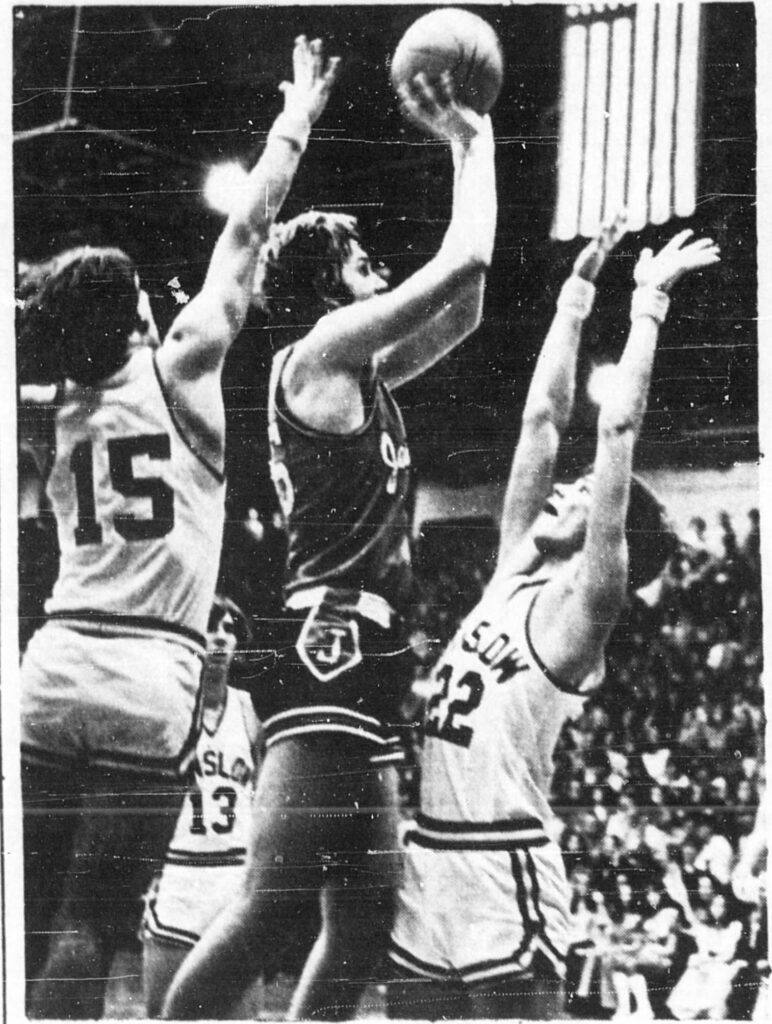
The Wildcats would get by Winslow in a close game and go on to the semi-state that year. Elliott, however, was chosen on the sectional all-tournament team.
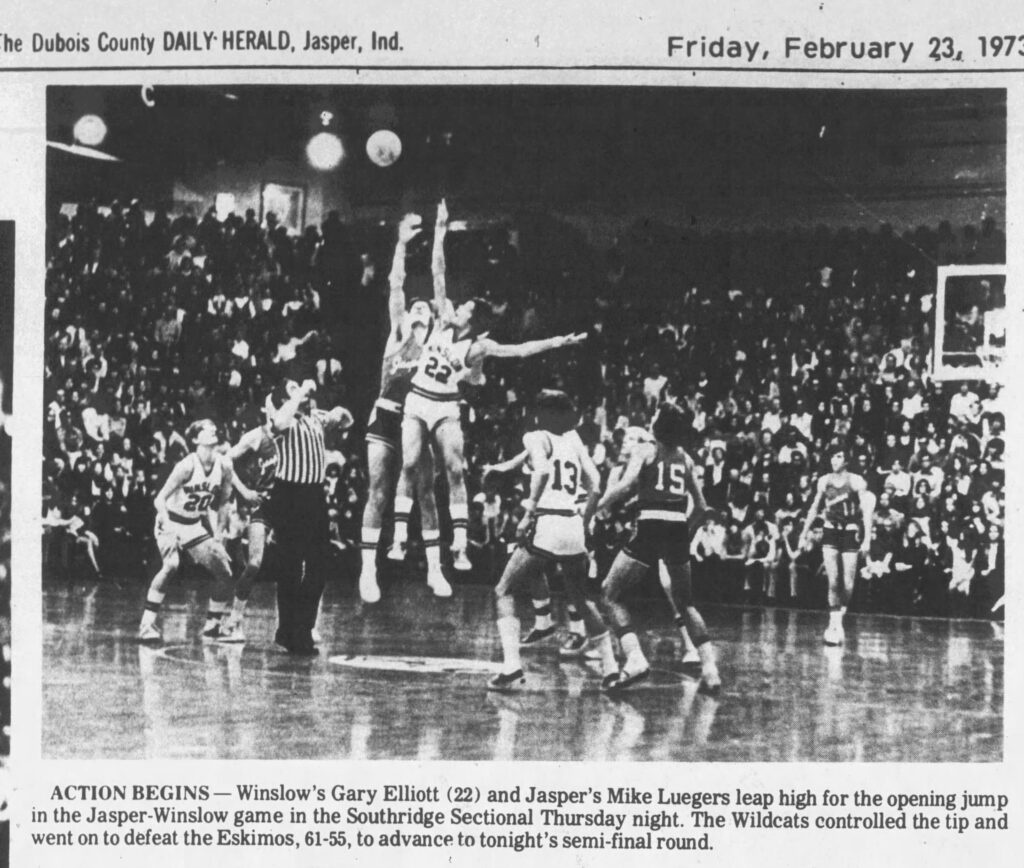
Because Winslow lost its first game in sectional play, Gary Elliott’s changes of being chosen for a high position on the Indiana high school all-state team dimmed, although he was selected for honorable mention. Al Brewster, the sports editor at the Bedford Times-Mail, was so upset that Elliott and other great players from small-town schools in southern Indiana had been excluded from high rankings that he put together his own first team all-state list with Gary Elliott’s name included. Elliott was recognized as being the 5th leading scorer in the state that year, averaging just short of 30 points a game, and, as noted, setting new Winslow basketball scoring records in every category. And although his high school playing days were over, several colleges sought to bring him on board. Western Kentucky won the race.
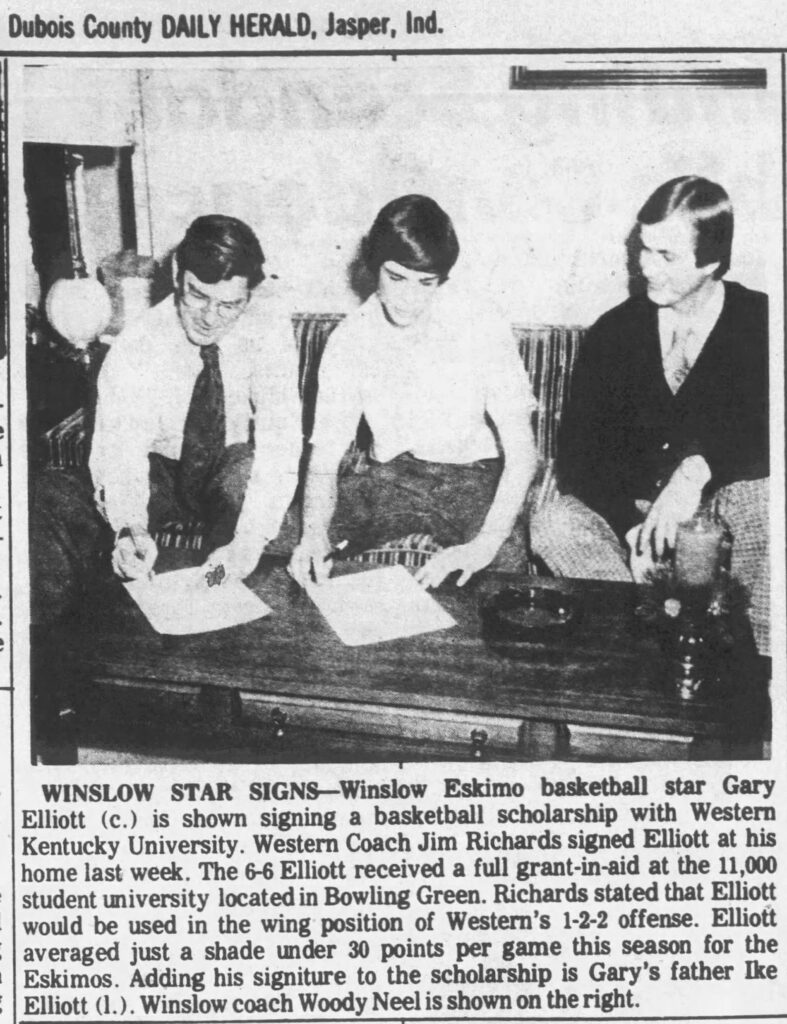
All seemed well. Western Kentucky Coach Jim Richards noted that Gary was a great catch, telling a Kentucky sports reporter, “Not only is he a good scorer and rebounder, but he also has the speed to play good defense.” The sportswriter believed Elliott had a good chance of “seeing some varsity action.”
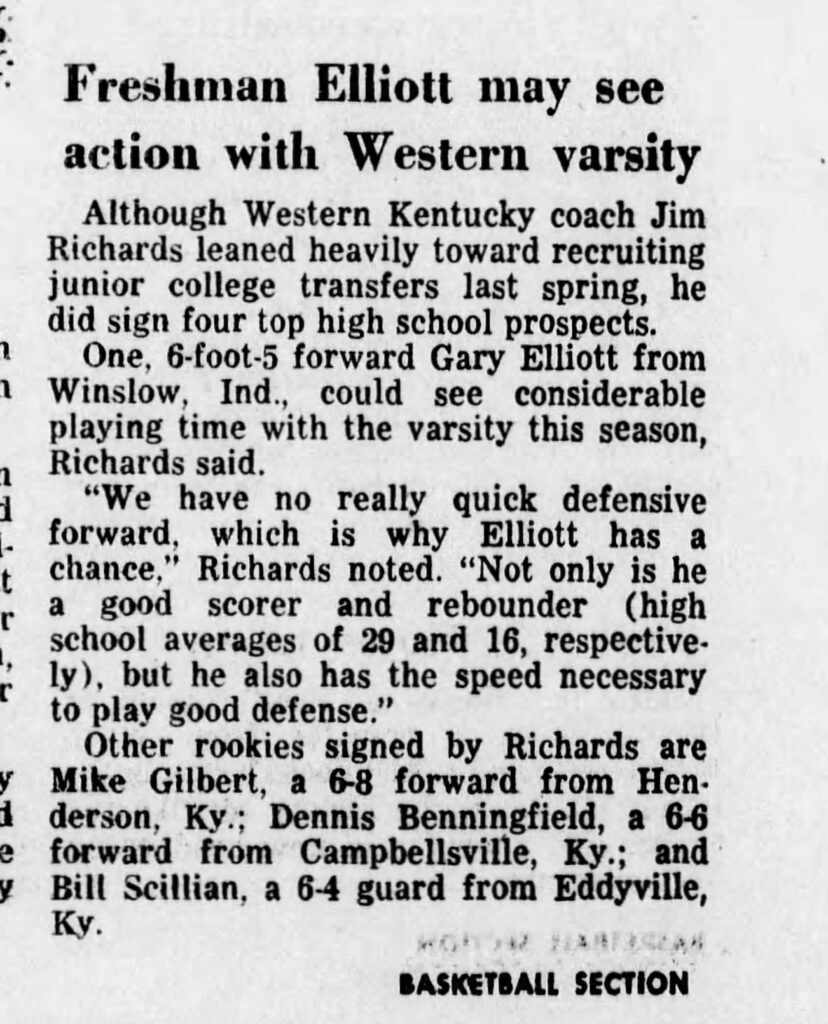
Gary had a great freshman year at Western Kentucky, leading all scorers for the JV (freshmen) team and being voted “most valuable player.” But something happened that left Elliott disappointed. Halfway through the next season, an Evansville paper reported Elliot would be transferring to the University of Evansville. Elliott was given two years eligibility in 1976 but never played for the Aces. He would move on to a more adult role, as husband and father. In April of 1977 he became the father of a baby boy, Matthew Warren. Ironically and sadly, like earlier Winslow star Dick Farley, Gary Elliott died young from of cancer in November of 1978. He was survived by his wife, Kellie, and his son.
Gary Elliott left a brief but powerful legacy of Indiana high school basketball performance, a legacy, however, that has sadly faded. By the early 1970s, the consolidation of schools in Indiana had made many small-town high schools like Winslow disappear like small plots of snow in a heavy spring downpour. Over time, with the loss of those schools, many stories of unique Indiana high school basketball traditions have faded away, many forgotten. It seems only right to find and save as many of these stories as possible, stories that brought great honor and joy to so many small-towns in Indiana. The story of Eskimo Gary Elliott is just this kind of tale.
